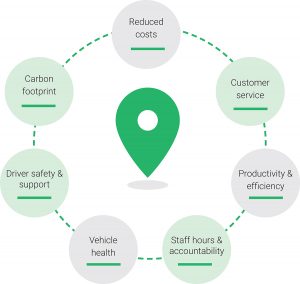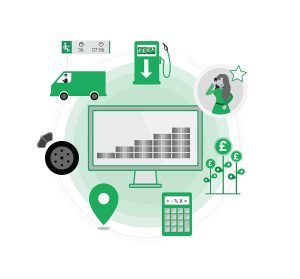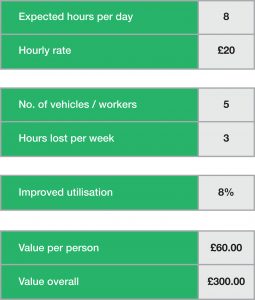When it comes to getting the best vehicle tracking system, small changes can make huge differences
For any busy company with pressures and priorities, opting for a new vehicle tracking system can be a decision that unfortunately falls to the wayside. Whether or not a telematics solution is already in place, many businesses forget to put aside time to re-evaluate and review their options. Meanwhile, technology is evolving and decisions to transform services are becoming increasingly critical to achieving sustainable and profitable operations.
At Quartix, our experience with over 13,000 businesses has shown us that small changes can make huge differences. What works for one company also might not always apply to another. We know vehicle tracking can bring an array of benefits to any kind of business, and we know that the best decisions are considered in a practical context and backed up by research. That’s why we encourage our customers to draw up a business case.
The role of a business case is to enable effective assessment and help all stakeholders to decide exactly where to invest money. Without a clear business case to support a change, the benefit of investing in a new telematics system can be miscommunicated. It can be dismissed as ‘keeping up with technology’ or simply chasing the lowest price. There are several tips to ensuring the benefits of a system are fully understood. So, what should your business case include?
- Scaled benefits, costs and savings using your own fleet data.
- Qualitative and quantitative benefits tailored to your business’ activity.
- Assessed business risks of current vs new options.
- The KPIs to measure success.
Where to begin
Over the past 18 years, we’ve seen almost every kind of business setting for a fleet of drivers. From construction companies to delivery trucks, and from large to small businesses and trades. Operational differences and likenesses can easily be put into perspective by answering a few simple questions regarding, firstly, your fleet:
- How many vehicles are in your fleet?
- What type of vehicles are in your fleet?
- How many drivers do you employ?
And, secondly, each vehicle:
- What is the average distance driven per day?
- How much do you spend on fuel per day?
- How many trips are made per day?
- How much do you currently spend on vehicle tracking?
You can then begin to calculate the potential savings not only of switching to an alternative system, but also the benefits that will come with it. For example, you might forecast fuel savings of up to 25% due to better insight into driving habits and the ability to improve these. You might also apply a significant improvement in productivity, as more sophisticated route reports and vehicle logs allow you to ensure the correct hours are being worked and that your customers are billed accordingly. If you calculate these benefits using your fleet data, it puts them into context.


What are the benefits?
Different businesses will have different agendas, so it’s useful to list your own businesses concerns and requirements and assess a potential vehicle tracking system against these. Some ideas might be reducing maintenance costs, insurance costs or CO2 emissions, or perhaps improving safety, customer service or productivity. Outlining your key concerns will help you understand which vehicle tracking features are the most important for your business.
As well as improving your vehicle’s MPG through better driving styles, we estimate that by eliminating one hour of vehicle idling per day for a single vehicle, a business can save over £40 per month. Small changes like this soon scale up over time and are worth factoring into your decision. If your drivers often wait between several stops, look out for tracking systems that help you identify and reduce the hours spent with the engine idling.
Vehicle utilisation is another area for potential improvement. With the insight necessary to eliminate crossover journeys and make more informed decisions, costs can be driven down; for example, knowing which driver is closest to a location. A forecast of the weekly savings that a company can make just by eliminating three unnecessary hours is shown here.
Important considerations
There are ways to pre-empt questions from those reviewing your business plan, that will save time further down the line. Know the length of the contracts available, understand any additional charges and determine that adequate cash flow is available to invest in each option that you are considering. That way, you won’t be suggesting an option that’s simply not feasible. It’s also a good idea to assess how the system will fit into your business’ current activities and whether it will introduce new ways of working.
And lastly, investigate whether the system is reliable – what do current customers say? If you come armed with information about the tracking system’s support package and reputation, your stakeholders have less to feel unsure about.
Here to help
For a step-by-step guide to building your full business case for vehicle tracking and calculating a return on investment based on your fleet data, see the Learn section of the Quartix website: quartix.net/learn.
If you would like any advice, our representatives are always happy to help! Call us on 01686 806 663.
Quartix Limited
Tel: 01686 807 607
Please note: this is a commercial profile













